10 Best Lat Exercises: Bodyweight, Free Weight, Machine and More (with Pictures!)
Spanning the entirety of the back, the lats are a crucial component of any individual’s physique. They not only contribute to the general appearance of width in the upper body, but are also responsible for movement relating to the scapula and shoulder joints.
With such a large and versatile muscle, it’s no wonder that quite a number of exercises have been developed to specifically target the latissimus dorsi.
Regardless of whether you’ve got access to a gym, only a few resistance bands or no equipment at all - this article will comprehensively list the most effective lat exercises and how to perform them.
What are the Latissimus Dorsi Muscles?
The latissimus dorsi or simply “lats” is a wide and flat muscle spanning across much of the mid and upper back. It is most prominent when contracted out to the sides, creating the appearance of “wings” as the muscle is occasionally referred to.
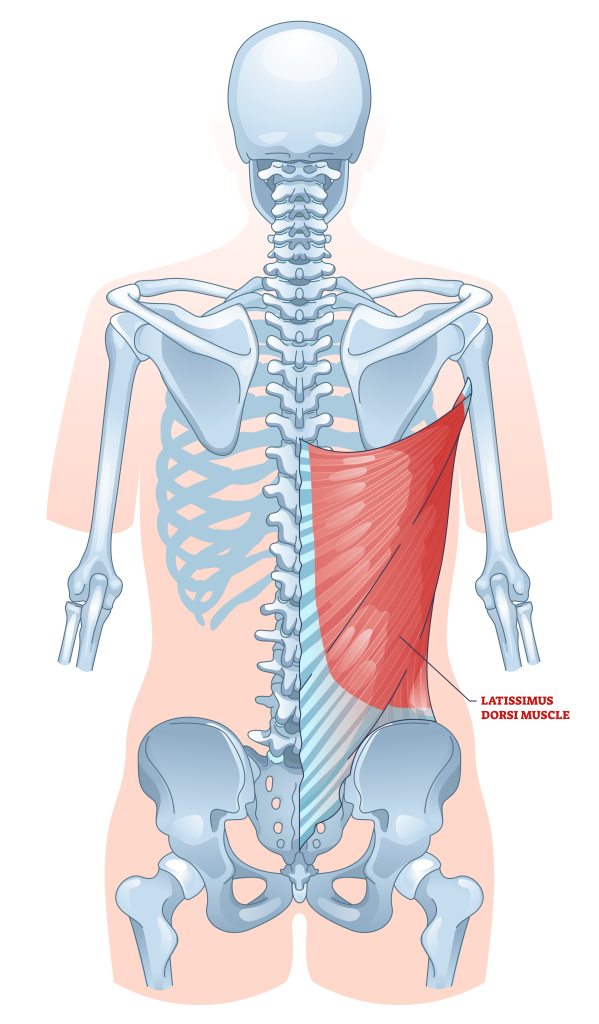
The lats are considered to be a pull muscle, and are primarily trained with exercises that involve adduction of the arms, movement of the scapula and stabilization of the shoulder joint.
How to Pick the Right Lats Exercise
Picking the right exercise to train your lats is as simple as accounting for what equipment you have available and deciding how difficult you need the exercise to be.
Lower intensity exercises will generally recruit fewer muscles during its movement pattern, and otherwise make use of self-stabilizing resistance (such as with machines).
In comparison, lat exercises of a higher intensity will target numerous muscles simultaneously, and make use of significantly heavier amounts of weight.
Best Bodyweight Lat Exercises (Calisthenics)
If you’re a calisthenics athlete or are simply away from the gym, picking one of the following bodyweight lat exercises is your best bet.
1. Pull-Ups
Pull-ups are the very definition of a bodyweight lat exercise, as much of the force required to perform it is derived from the muscles of the mid-back.
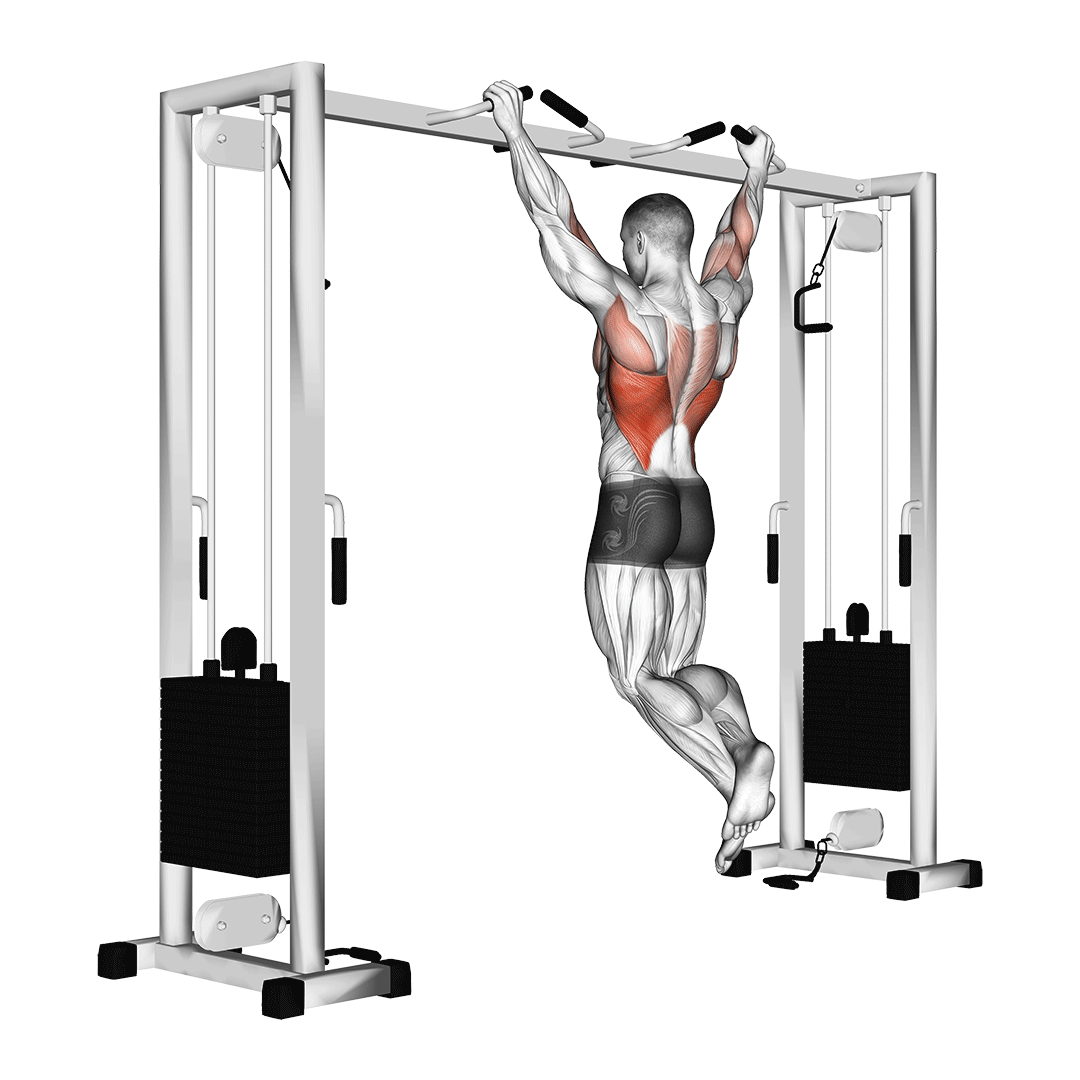
The pull-up is a compound exercise of moderate-to-high intensity performed by athletes, bodyweight fitness enthusiasts and weightlifters alike for the purposes of building their back musculature.
Pull-ups will target the infraspinatus, teres, trapezius, posterior deltoid head and biceps alongside the lats.
Equipment Needed
This particular exercise will require a pull-up bar or similar overhead handle.
Benefits for the Lats
Pull-ups are excellent for building wider lats without the need for resistance training machines or free weight equipment.
Because the exerciser will be lifting the entirety of their own body’s weight with each repetition, most individuals will find that the pull-up provides excellent training stimulus without the need for high volume that is characteristic of other bodyweight exercises.
How-to:
To perform a repetition of the pull-up, the exerciser will grip an overhead bar with their palms facing away from the torso, hands set slightly wider than shoulder-width apart.
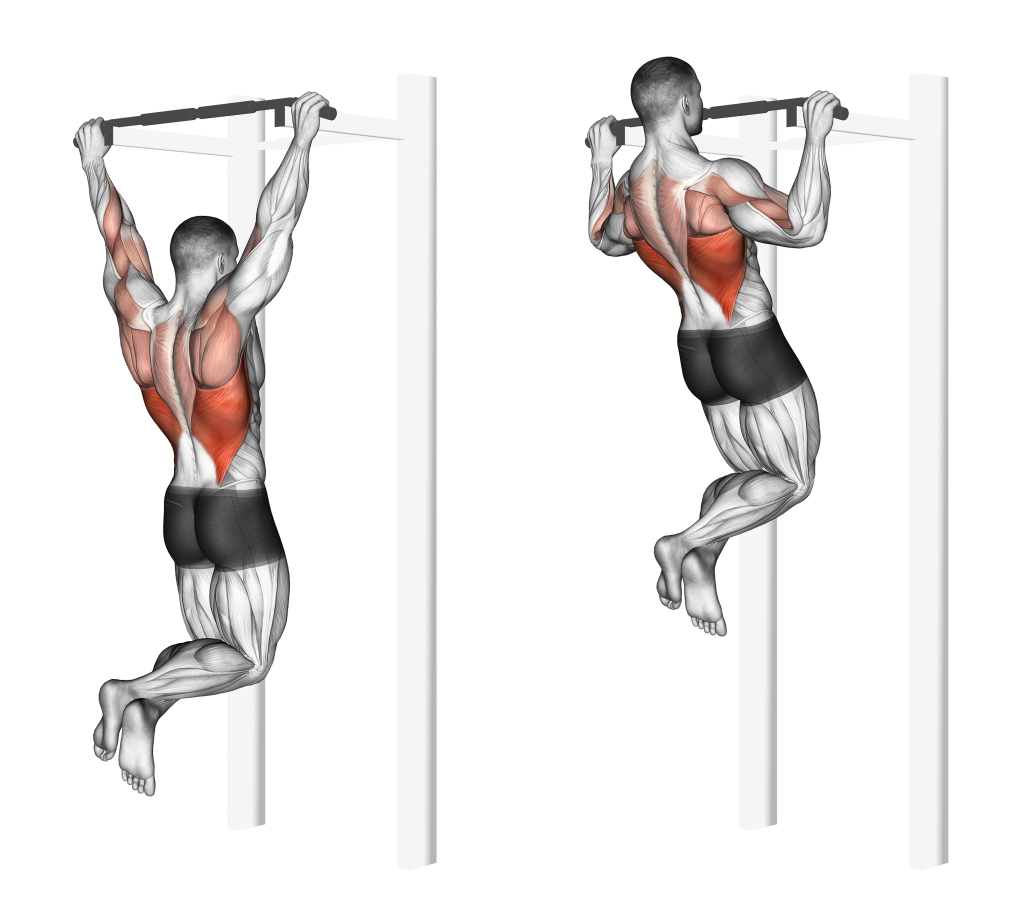
Then, ensuring the feet are off the ground and the arms fully extended overhead, the exerciser will contract their back and core muscles as they draw their body towards the bar. The elbows will bend as they do so, with the lower body remaining as stationary as possible.
Once the bar is beneath their chin, the exerciser will lower themselves back down so as to complete the repetition.
2. Chin-Ups
Chin-ups are the more arm-focused counterpart to the pull-up. Despite the fact that they feature far more biceps brachii recruitment than the pull-up, the chin-up is nonetheless still excellent for targeting the lats as well.

The chin-up is a multi-joint calisthenics exercise performed for the purposes of building muscle mass in the latissimus dorsi, trapezius, biceps brachii, rhomboids, teres muscles and the posterior deltoid head.
Equipment Needed
Chin-ups will require a pull-up bar or similar object.
Benefits for the Lats
Chin-ups allow for equal distribution of force throughout the upper body’s pull muscles.
While they aren’t quite as effective at targeting the lats as pull-ups, they make up for it by being somewhat easier to perform - thereby allowing for greater training volume to be achieved.
How-to:
Suspending themselves from an overhead bar with the core contracted, the palms facing inwards and the hands set shoulder-width apart, the exerciser will bend their elbows and pull their torso towards the bar. The lower body should remain stationary as they do so.

Once the bar is beneath the exerciser’s chin, they will slowly reverse the motion until they have returned to their original starting position - thereby completing the repetition.
3. Inverted Rows
Inverted rows are a bodyweight compound movement often preferred over the pull-up due to its relatively lower intensity and greater capacity for volume. This makes it the perfect calisthenics exercise for building endurance and mass in the lats.
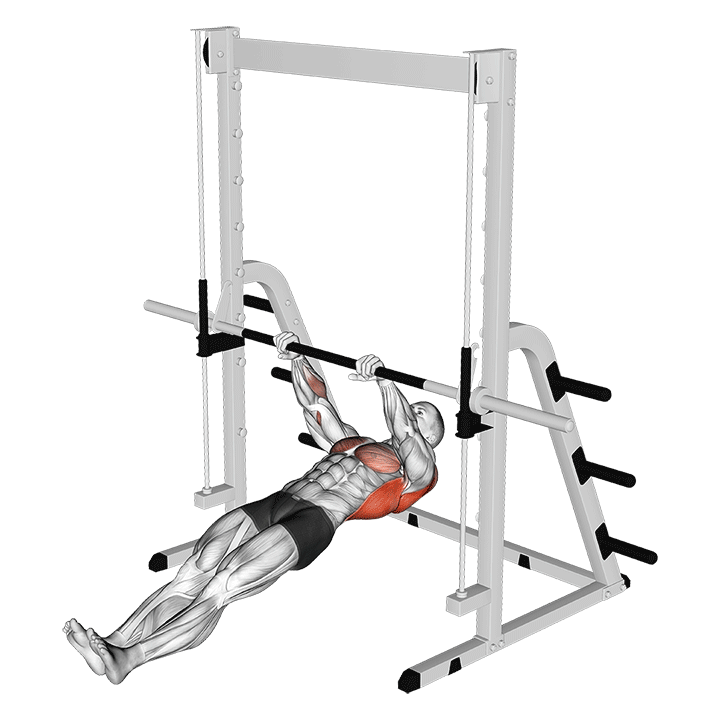
Like other back-focused compound movements, inverted rows target the lats, trapezius, rhomboids, teres muscles, posterior deltoid head and the biceps brachii.
Equipment Needed
Inverted rows require a racked barbell (or similar type of bar) elevated several feet off the floor.
Enough space should be present for the exerciser to fully extend their arms beneath it without their back touching the ground.
Benefits for the Lats
Inverted rows are the perfect alternative to pull-ups for individuals who cannot perform them, or otherwise wish to maximize the amount of bodyweight training volume they place on their lats.
In addition, inverted rows are excellent for building up the necessary strength and mechanical familiarity for performing heavier horizontal pulling exercises.
How-to:
Positioning themselves beneath the bar, the exerciser will grip the bar with the palms facing inwards and the arms fully extended. The legs should be extended across the floor, and the core contracted so as to straighten the body.
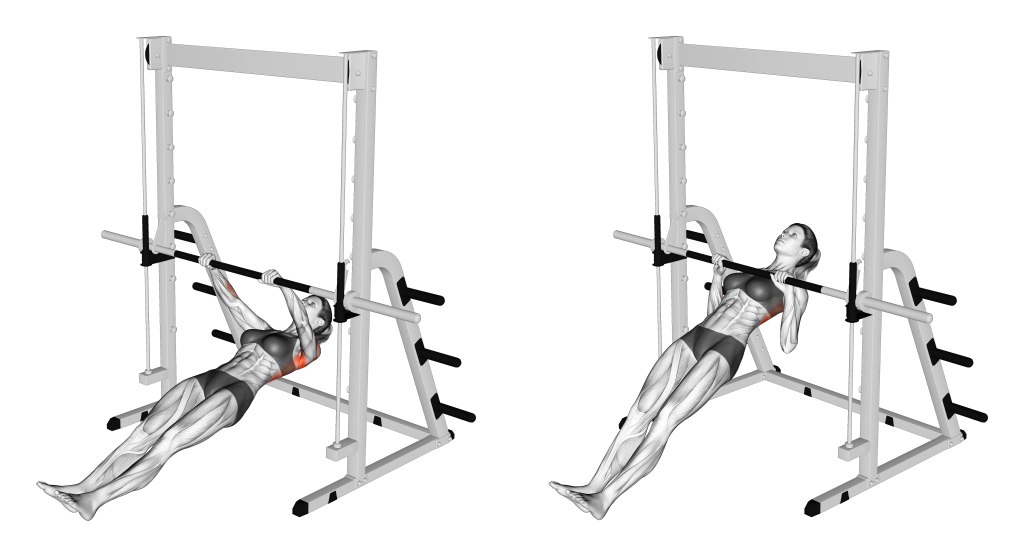
Beginning the repetition, the exerciser will contract the muscles of their back as they pull their chest towards the bar, bending their elbows as they do so.
Once the exerciser’s chest has touched the bar, they will simply reverse the motion to complete the repetition.
Best Lat Exercises with Dumbbells, Barbells and Kettlebells (Free Weights)
If you’re looking for greater isometric contraction and an easier time progressing, the following free weight lat exercises are a good place to start.
4. One-Arm Dumbbell Rows
Occasionally referred to as simply “dumbbell rows”, the one-arm dumbbell row is perhaps one of the most accessible dumbbell lat exercises one can find.
It is classified as a compound exercise with a particular emphasis on the biceps brachii, latissimus dorsi, the teres muscles and the middle trapezius.
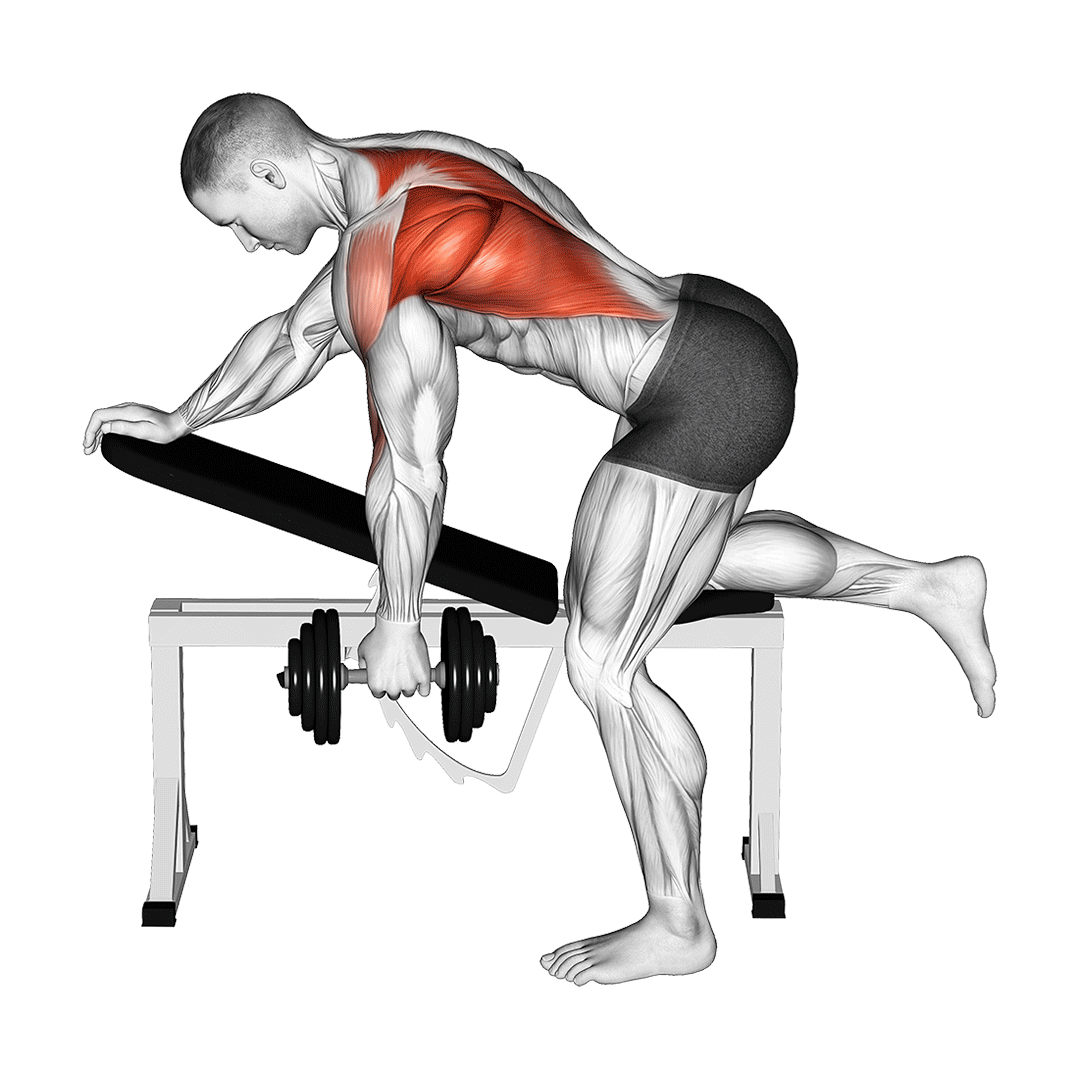
The dumbbell row is performed with the exerciser leaning forward at the hips so as to maximize range of motion, and is otherwise programmed frequently as a secondary compound exercise of moderate resistance and high volume.
Equipment Needed
One-arm dumbbell rows only require a single dumbbell, an exercise bench, dumbbell rack or other sturdy object may also be used to support the torso with the opposite arm.
Benefits for the Lats
Single-arm dumbbell rows are excellent for unilaterally targeting the muscles of the upper and mid back. As a horizontal pulling exercise, they are particularly effective at working the lats in a fashion that emphasizes time under tension.
Moreover, the dumbbell row is simple enough to make it accessible for even complete novices to weightlifting.
How-to:
Standing with the feet set a stable distance apart and a dumbbell held in one hand, the lifter will bend at the hips and contract their core so as to keep the back straight and stable.
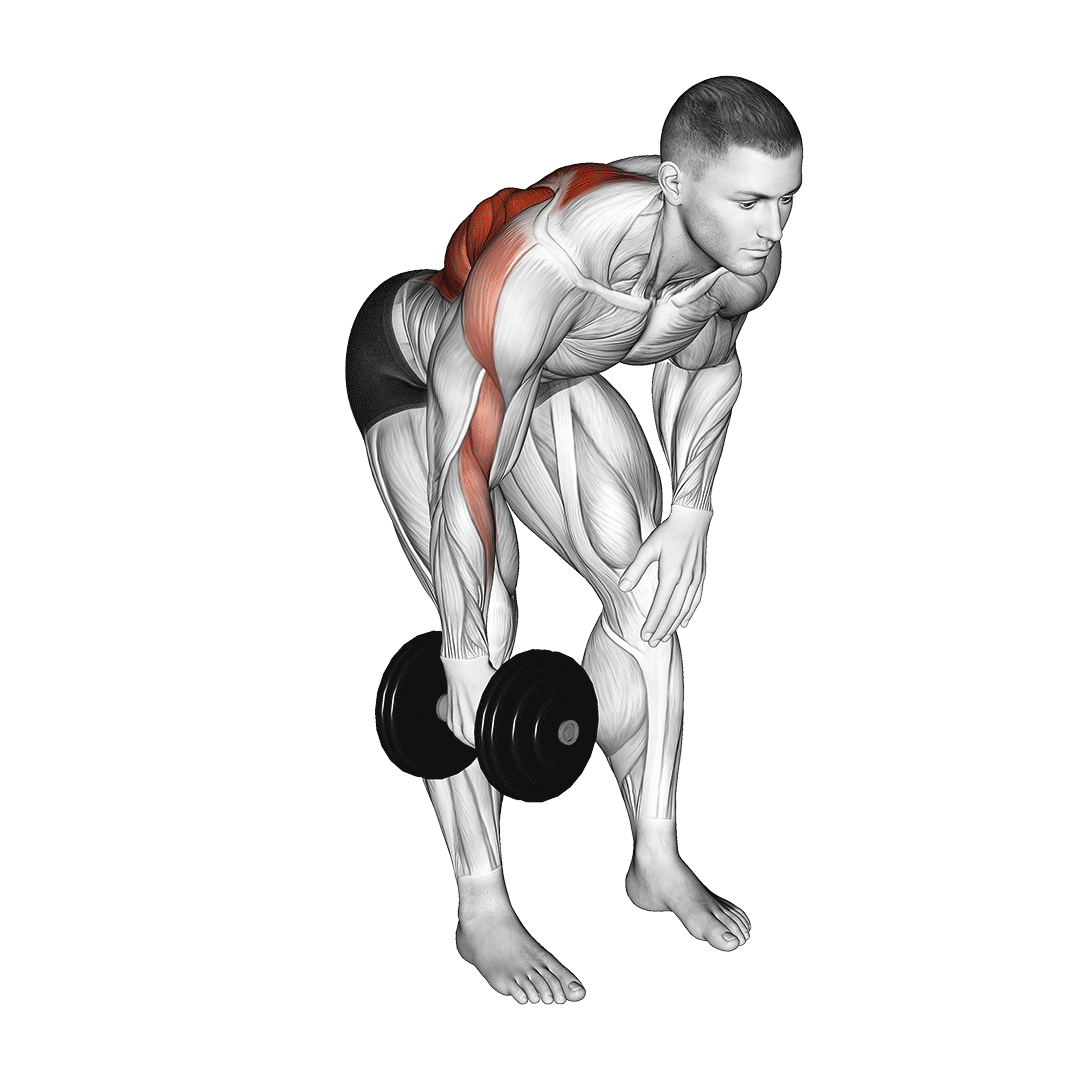
With the dumbbell hanging beneath the torso, the lifter will pull their elbow behind their body as they draw the dumbbell upwards. The elbow should remain close to the sides of the torso, with the shoulder blades retracting alongside.
Once the apex of the movement is reached, the lifter will simply reverse the motion and return the dumbbell back to its original position beneath their torso - thereby completing the repetition.
5. Barbell Bent-Over Rows
The very definition of an effective back-building exercise, the barbell bent-over row combines heavy amounts of weight with a large-scale muscular recruitment pattern to build significant mass throughout the back.
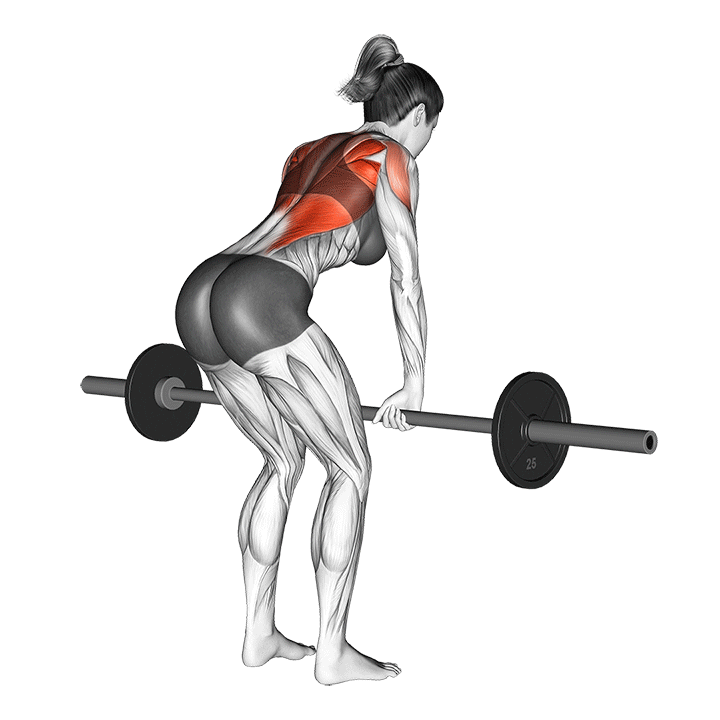
Barbell bent-over rows are considered to be a compound horizontal pulling exercise, and are most often performed for moderate volume and high resistance so as to target the lats, trapezius, biceps and many other muscles found in the mid-back.
Equipment Needed
Barbell bent-over rows will require a barbell and set of weight plates.
Benefits for the Lats
Barbell rows are perhaps one of the heaviest lat exercises one can perform, and are excellent for building not only back thickness, but also general pulling strength.
In addition, bent-over barbell rows are an excellent entry into more advanced barbell rowing exercises such as the Pendlay row or the t-bar row.
How-to:
Standing with the feet shoulder-width apart and a loaded barbell held in a double overhand grip, the lifter will bend slightly at the knees and hinge their hips forwards as they keep their spine in a neutral curvature.
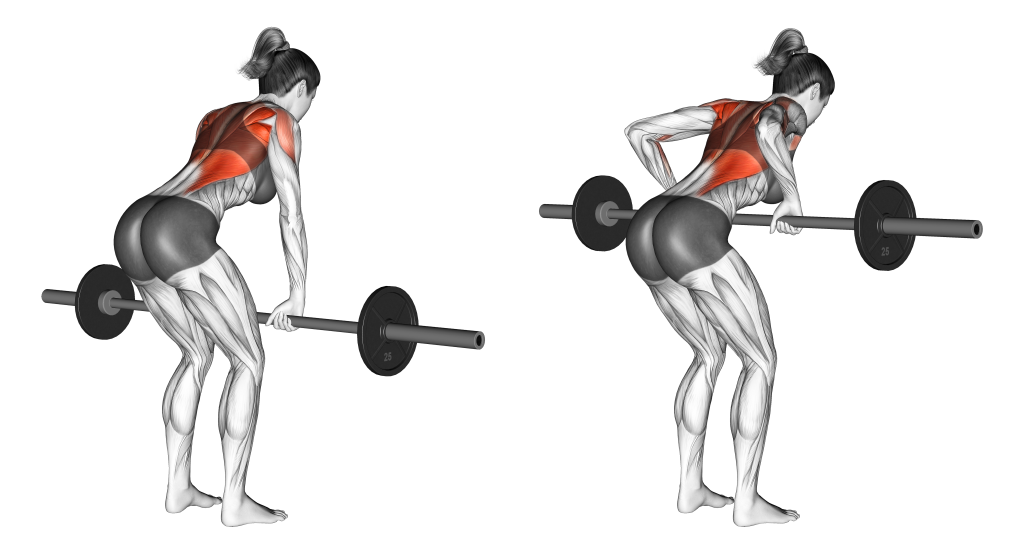
From this stance, the lifter will pull their elbows behind their torso while keeping them relatively close at the sides - following suit with their shoulder blades. Oncethe barbell touches the torso, they will slowly reverse the motion in a slow and controlled manner.
6. Kettlebell Pullovers
Kettlebell pullovers are unique in the way that they target the muscles of the latissimus dorsi, teres major and the chest muscles. In technical terms, they are considered to be a compound exercise most often performed as an accessory movement for low resistance and high volume.
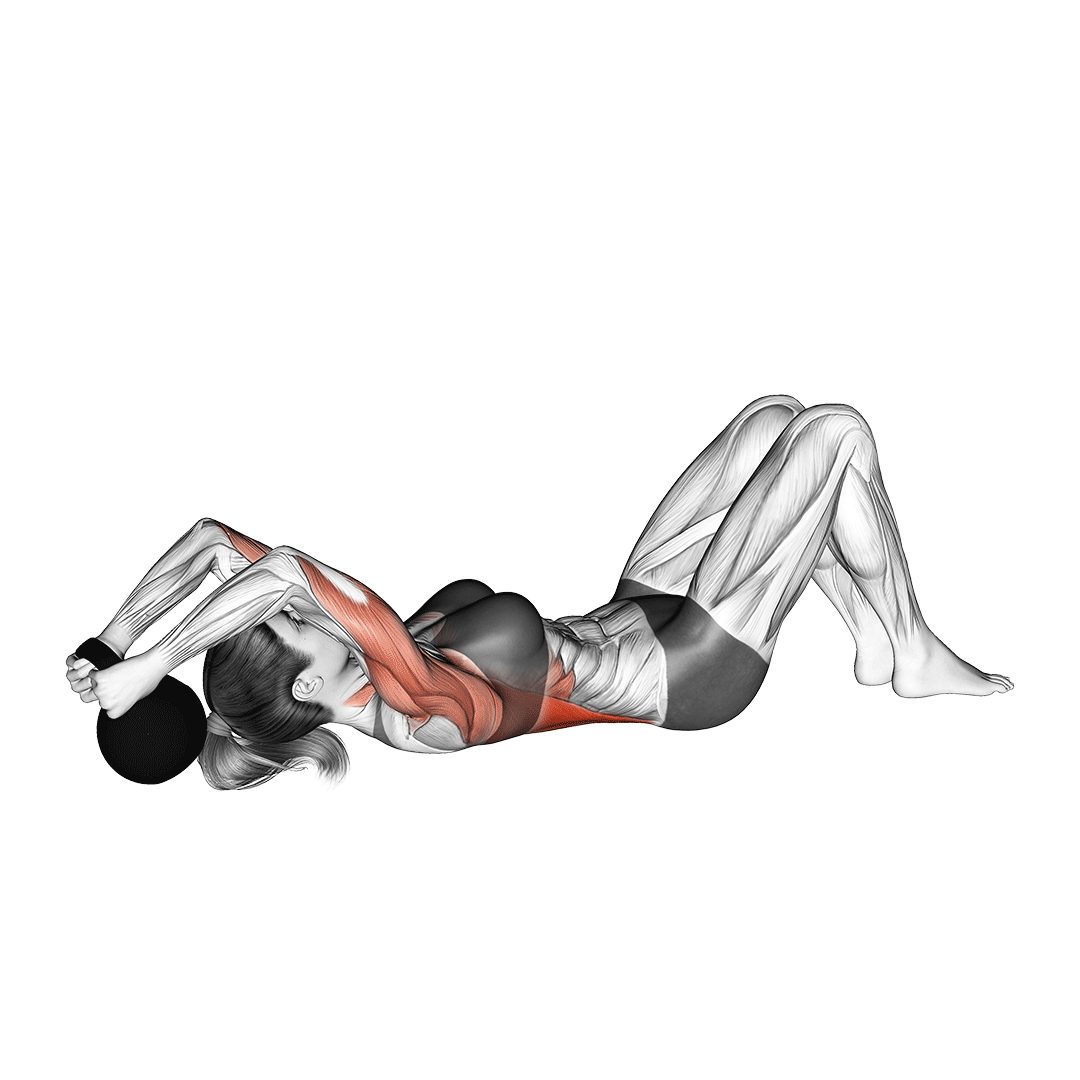
Equipment Needed
As the name implies, kettlebell pullovers require only a kettlebell.
Benefits for the Lats
Kettlebell pullovers are excellent for targeting the lats in a unique range of motion - as well as acting as an accessory exercise for working both sides of the upper torso simultaneously.
How-to:
Lying flat on a bench with a kettlebell held in both hands over the chest, the exerciser will bend their elbows slightly and lower the kettlebell backwards until it is behind their head.
From this point, the exerciser will flex their lats and pectorals so as to draw the kettlebell back over their body to its original position - thereby completing the repetition.
Best Lat Exercises with Machines
For self-stabilizing resistance and greater versatility, try out the following machine lat exercises.
7. Lat Pulldowns
Lat pulldowns are a vertical pulling compound movement distinctly similar in mechanics to the pull-up. They’re noted for being particularly effective for building the width of the back by emphasizing the lats - but will also target the biceps, posterior deltoid head, mid-trapezius and other nearby muscle groups.
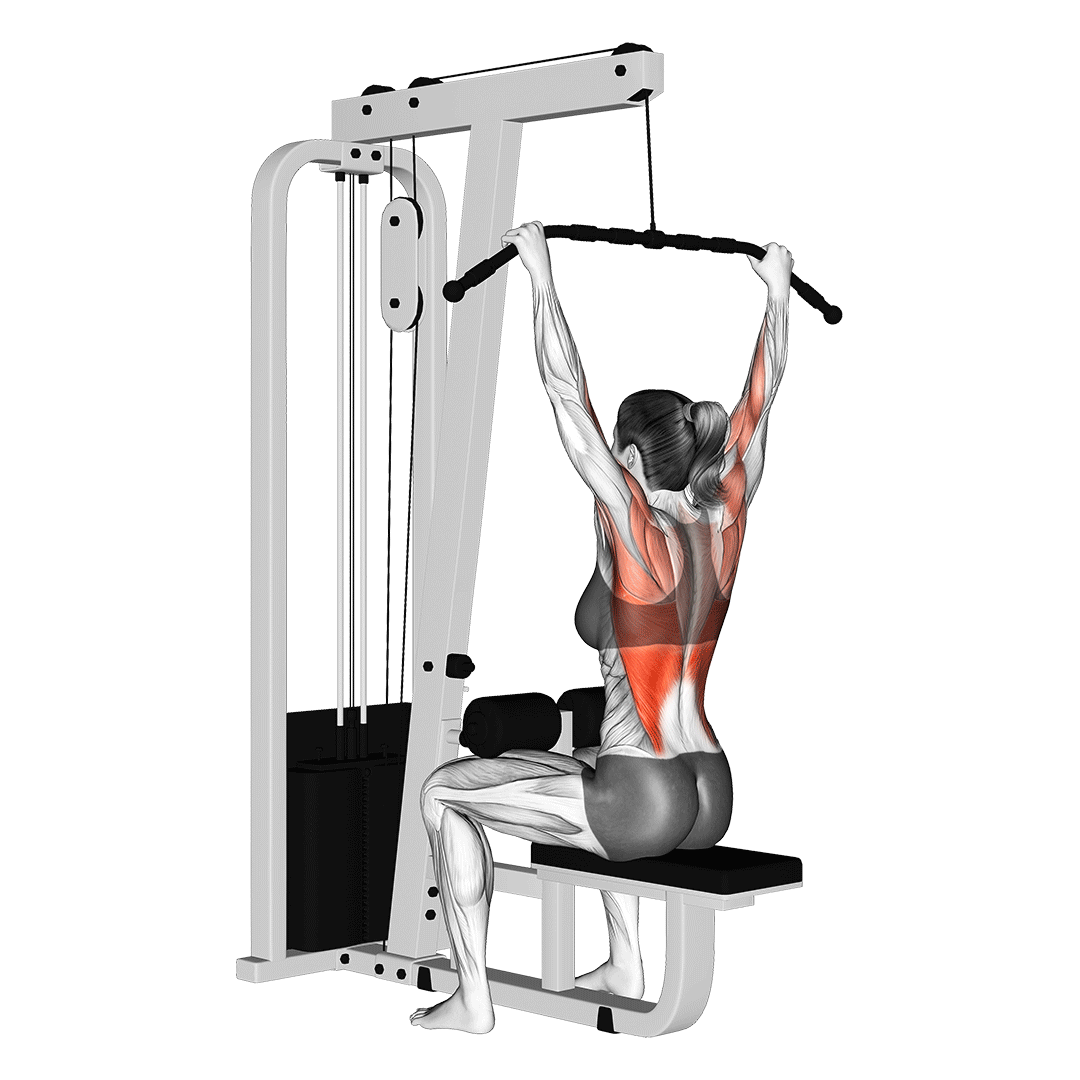
Equipment Needed
Lat pulldowns will require a lat pulldown machine or a cable machine of similar nature.
Benefits for the Lats
The lat pulldown is considered to be one of the most effective machine-based exercises for targeting the lats, as it features similar mechanics to the pull-up but is not limited by factors like grip strength or the lifter’s bodyweight being too heavy.
How-to:
Sitting in the machine, the lifter will grasp the bar overhead with a pronated grip, hands set slightly wider than shoulder-width apart.
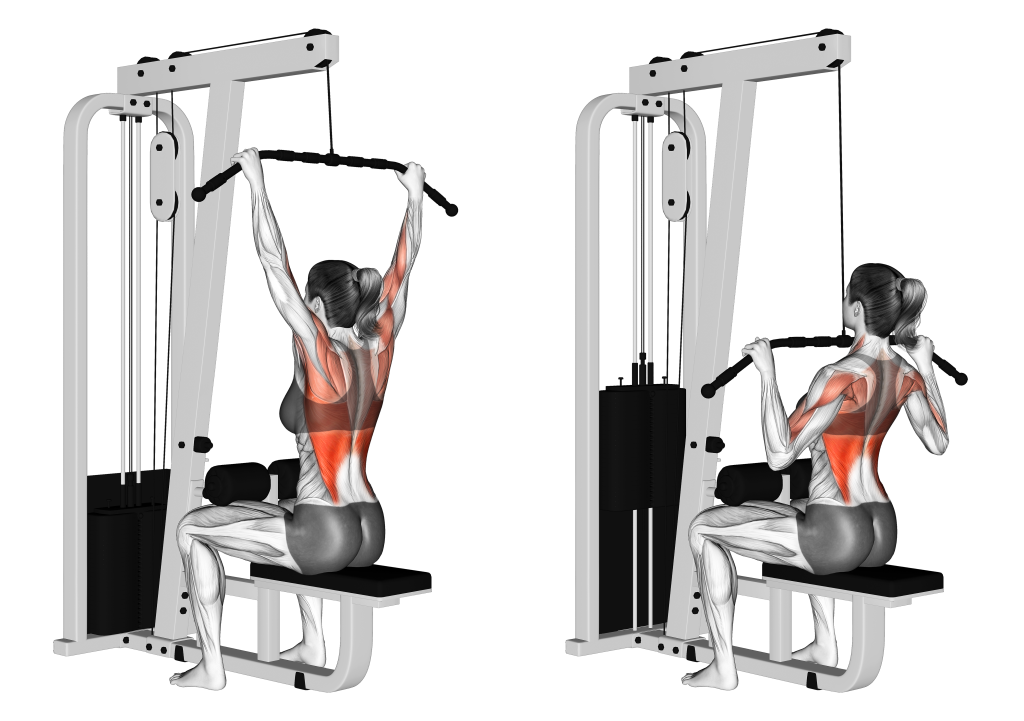
From this position, they will lean slightly back as they pull the bar towards their chest, squeezing their scapula together and drawing the elbows to the sides of the torso.
Once the bar is beneath the chin, the lifter will slowly reverse the motion so as to complete the repetition.
8. Cable Rows
A horizontal machine-based pulling exercise performed so as to build thickness and strength in the back - the cable row is yet another excellent lat-dominant exercise employed by bodybuilders and athletes alike as a primary compound exercise.
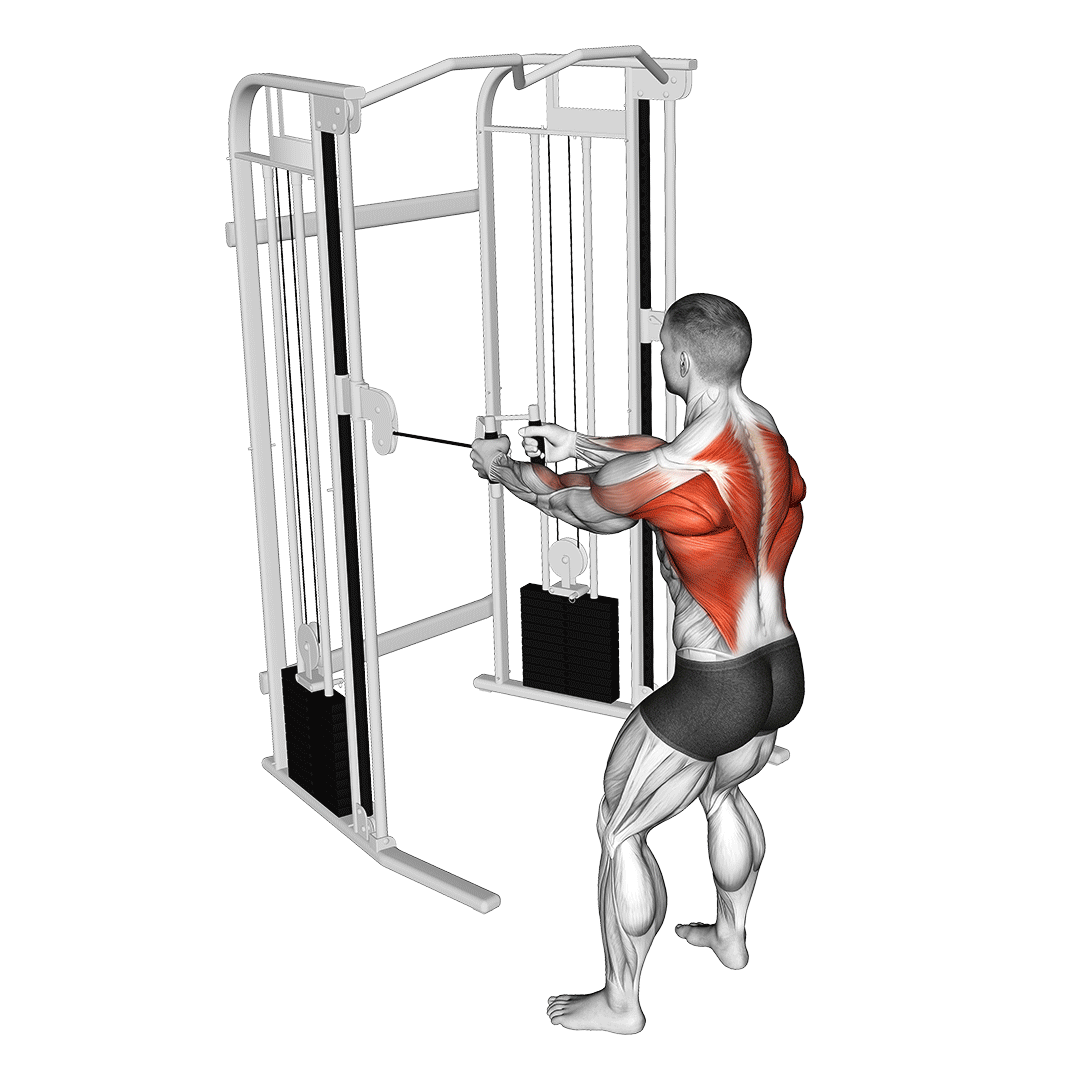
Equipment Needed
Cable rows will require a cable machine.
Benefits for the Lats
Cable rows target the lats with self-stabilizing resistance and are particularly effective for building thickness and strength therein. Its machine-based nature makes it easy to modify for whatever role or training needs that the lifter may have.
How-to:
Standing facing a cable machine with the handle held in a pronated grip with both hands at arm's length, the lifter will contract the muscles of their back and draw their elbows behind their torso while keeping them close to the sides.
Once the bar is within several inches of touching the torso, the lifter will simply reverse the motion in a slow and controlled manner - thereby completing the repetition.
Best Resistance Band Lat Exercises
Whether for the purposes of warming up or for emphasis on time under tension, the following resistance band lat exercises are the perfect choice.
9. Resistance Band Back Rows
A variation of the standard rowing exercise performed with the use of a resistance band - resistance band back rows allow for excellent time under tension to be achieved without the need for expensive equipment or an increased risk of injury.
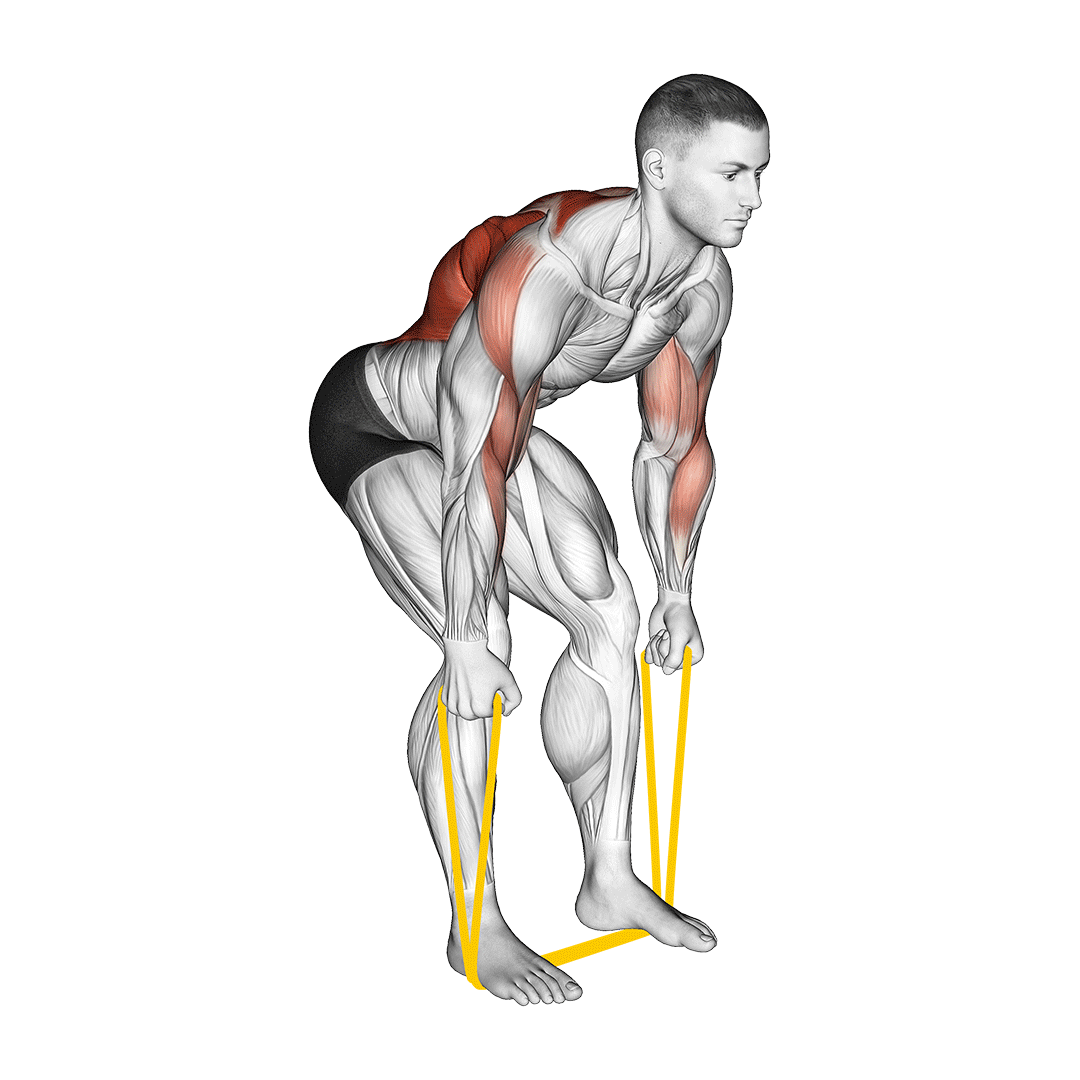
Resistance band rows target much the same muscles as other row exercises. That is to say, the lats, trapezius, biceps brachii, posterior deltoid head, rhomboids and other muscles located along the back.
Equipment Needed
As you may guess, this particular exercise needs a resistance band of low or moderate resistance.
Benefits for the Lats
Resistance band back rows are the perfect lat exercise for non-training purposes such as warming up and stretching, as well as for achieving greater endurance and stability.
How-to:
Wrapping one end of the resistance band around their feet, the exerciser will stand upright with the opposite end of the band held in an overhand grip with both hands.
Ensuring the band has sufficient tension, the exerciser will then hinge slightly forward at the hips as they engage the muscles of their back - drawing their elbows behind their torso and pulling the band towards their diaphragm.
Once the hands are sufficiently close to the torso, the exerciser will slowly return their arms back to a state of full extension - thereby completing the repetition.
10. Resistance Band Lat Pulldowns
For those without access to a cable machine - performing the lat pulldown can be as simple as wrapping one end of a resistance band overhead.
This particular lat exercise is excellent for emphasizing the lats at home, and is classified as a multi-joint vertical pulling exercise.
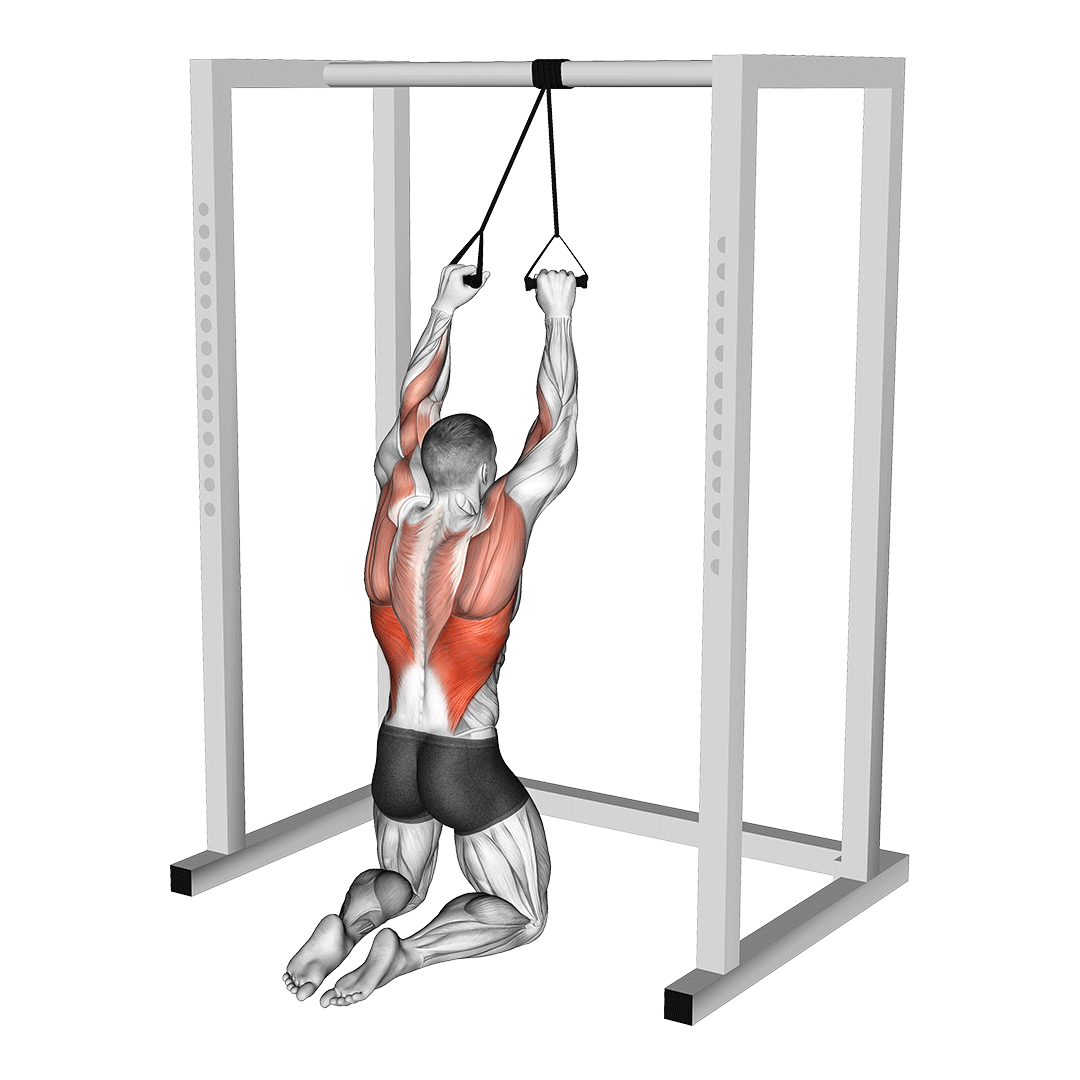
Equipment Needed
Resistance band lat pulldowns will require a resistance band and a tall object with which to fix one end of the band.
Benefits for the Lats
Like machine lat pulldowns, band lat pulldowns are excellent for targeting the muscles of the middle and upper back with a lengthy time under tension and high volume - all with the benefit of a large range of motion that builds the width of the lats particularly well.
How-to:
With the resistance band anchored to a stable point overhead, the exerciser will grip the opposite end in both hands - of which should be in a pronated orientation.
Taking a step back so as to create tension in the band, the exerciser will lift their chest, engage their core and allow the resistance of the band to extend their arms before them.
From this position, the exerciser will contract the muscles of their back, squeezing their shoulder blades together as they draw their elbows behind their body.
Once the elbows are parallel to the sides of the torso, they will reverse the motion in a slow and controlled manner so as to complete the repetition.
In Conclusion
Although this article has listed the most popular lat exercises - they are not the only choices available.
If you find that your chosen back exercise doesn’t quite fit, we suggest trying out certain variations of the same exercise, or picking a new one entirely.
Regardless of what exercise you’ve picked, remember to focus on high-quality repetitions with proper form, and to consult a medical professional prior to engaging in an intense training plan.
References
1 Schuler, Lou., Mejia, Michael. Pp. 167 “Upper Back” “The Men's Health Home Workout Bible: Over 400 Exercises No Gym Required”. United States: Harmony/Rodale, 2002.
2 English, Tyler. “Men's Health Natural Bodybuilding Bible: A Complete 24-Week Program For Sculpting Muscles That Show.” United States: Rodale, 2013.
